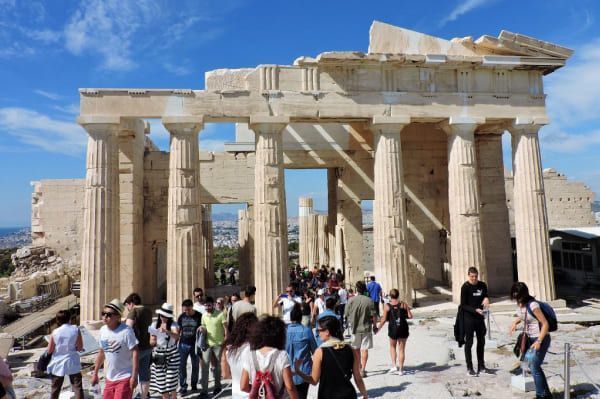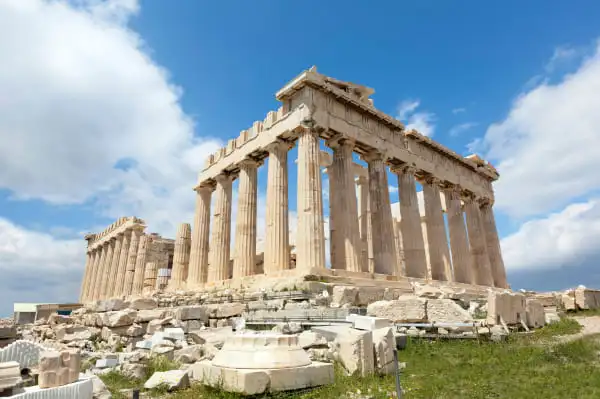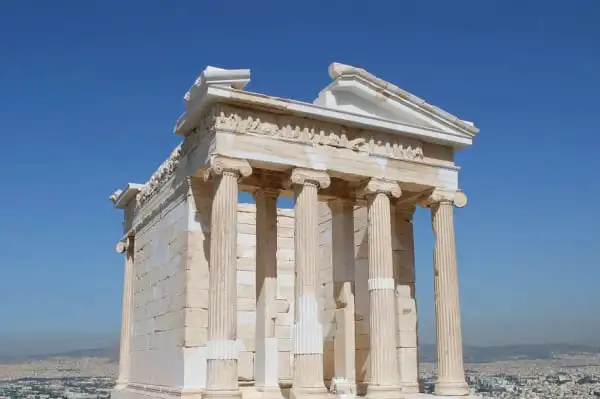

Nafplio: Seaside Elegance
Nafplio, a picturesque town about two hours from Athens, graces the northeastern coast of the Peloponnese peninsula. Its narrow streets, elegant neoclassical architecture, and Venetian fortresses create an atmosphere of timeless charm. Explore the Palamidi Fortress, indulge in Greek cuisine at waterfront tavernas, and soak in the sun at the town’s beaches. Nafplio is the embodiment of laid-back seaside elegance. Historical Significance Nafplio’s history dates back to ancient times when it was known as Nafplia. It was a significant Mycenaean and Classical Greek settlement. Later, during the Middle Ages and the Byzantine era, it was a prominent fortress town. Nafplio rose to greater prominence as the first capital of the newly independent Greek state after the Greek War of Independence in the early 19th century. The town’s historical importance is reflected in its well-preserved architecture and landmarks. Architectural Beauty Nafplio’s architecture is a captivating blend of Venetian, Ottoman, and neoclassical styles. The town’s charming old town, with its narrow, winding streets and well-preserved buildings, is a testament to its historical significance. Key architectural landmarks include the Palamidi Fortress, the Bourtzi Castle, and the grand neoclassical buildings that line the streets. Palamidi Fortress Palamidi Fortress, perched on a hill overlooking Nafplio, is a striking symbol of the town’s history. Built by the Venetians in the 18th century, it offers stunning panoramic views of the town and the Argolic Gulf. Visitors can ascend the 999 steps or drive to the top for a rewarding experience. Bourtzi Castle The Bourtzi Castle, a small fortress situated on an island in Nafplio’s harbor, is another notable landmark. It once served as a fortress and a prison and is now a picturesque backdrop to the town’s waterfront. Cultural Attractions Nafplio is a town steeped in culture. The Archaeological Museum, housed in a Venetian building, features artifacts from the region’s rich history. The War Museum, located in a neoclassical building, showcases the military history of Greece. The town is also known for its vibrant arts scene and hosts various cultural events and festivals throughout the year. Seaside Charm Nafplio’s waterfront promenade is a focal point of the town’s charm. Visitors can enjoy leisurely strolls along the promenade, lined with cafes and restaurants that offer a taste of local cuisine and stunning sea views. The town’s two main beaches, Arvanitia and Karathona, provide opportunities for relaxation and swimming. Gastronomy Nafplio’s culinary scene is a delightful exploration of Greek flavors. Seafood is a highlight, and the town’s tavernas offer fresh catches of the day. Greek cuisine, with its Mediterranean flavors, is showcased in local dishes like grilled octopus, fresh salads, and traditional sweets. A Tranquil Retreat Nafplio’s atmosphere is often described as tranquil and romantic, making it a perfect destination for couples and travelers seeking a peaceful retreat. The town’s relaxed pace of life and its enchanting streets offer an ideal backdrop for a leisurely exploration of its historical and cultural treasures. Nafplio is a coastal town that seamlessly blends history, culture, and natural beauty. Its architectural elegance, historical significance, and seaside charm create an enchanting destination for travelers seeking an authentic Greek experience. Nafplio’s tranquil ambiance and timeless beauty make it a place where the past and the present converge, inviting visitors to immerse themselves in the essence of Greek culture and hospitality.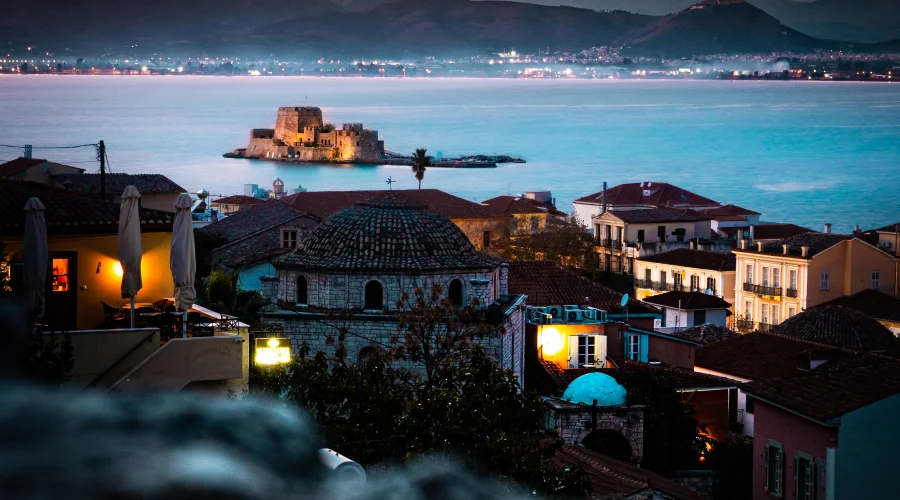
Epidaurus: Ancient Theater Marvel
Epidaurus, an ancient sanctuary located on the northeastern coast of the Peloponnese in Greece, is home to one of the world’s most extraordinary archaeological sites—the Epidaurus Theater. This marvel of ancient engineering, architecture, and acoustics has not only captured the imagination of historians and archaeologists but also continues to enthrall audiences with its exceptional acoustics and timeless beauty. A Sanctuary of Asclepius Epidaurus was primarily known as a sanctuary dedicated to Asclepius, the god of healing and medicine. People from across the ancient world came to Epidaurus in the hopes of receiving divine healing. The sanctuary included temples, baths, and other facilities for the treatment of physical and mental ailments. The Great Theater of Epidaurus The most celebrated feature of Epidaurus is its ancient theater, known as the Epidaurus Theater or the Great Theater of Epidaurus. This architectural masterpiece was built in the 4th century BCE, during the golden age of ancient Greece. It is renowned not only for its historical significance but also for its exceptional acoustics and harmonious design. Architectural Brilliance The Epidaurus Theater is a marvel of classical Greek architecture. Its seating area is carved into the natural hillside, and it can accommodate approximately 14,000 spectators. The theater’s semi-circular shape and tiered seating ensured that every audience member had an unobstructed view of the stage, which is known as the orchestra. Acoustic Wonders One of the most astonishing aspects of the Epidaurus Theater is its unparalleled acoustics. The design of the theater is such that even the faintest whisper spoken in the center of the orchestra can be heard clearly in the topmost rows of the seating area. The Greeks of antiquity achieved this acoustic perfection without the aid of modern technology, leaving modern scientists and engineers in awe. Musical and Theatrical Performances The Epidaurus Theater was not only a place for theatrical performances but also for musical and religious events. In ancient times, the theater hosted drama competitions during the annual festival of Asclepius, where playwrights like Sophocles and Euripides saw their plays performed for the first time. Theater’s Revival and Restoration Over the centuries, the Epidaurus Theater fell into disrepair and was abandoned. It wasn’t until the 19th century that efforts to restore and preserve the site began. Today, the theater is used once again for performances, allowing modern audiences to experience the acoustical wonder of this ancient marvel. A Timeless Marvel The Epidaurus Theater is a testament to the enduring brilliance of ancient Greek architecture and engineering. Its flawless acoustics, harmonious design, and historical significance continue to inspire awe and admiration. The theater is not merely a relic of the past but a living testament to the cultural and artistic achievements of the ancient Greeks. Epidaurus and its Great Theater are more than just archaeological treasures; they are windows into the artistic and architectural genius of the ancient world. The theater’s flawless acoustics and harmonious design remind us of the timelessness of human creativity and innovation. Epidaurus stands as a testament to the enduring pursuit of excellence in both form and function, transcending the ages to captivate and inspire all who have the privilege of experiencing its marvels.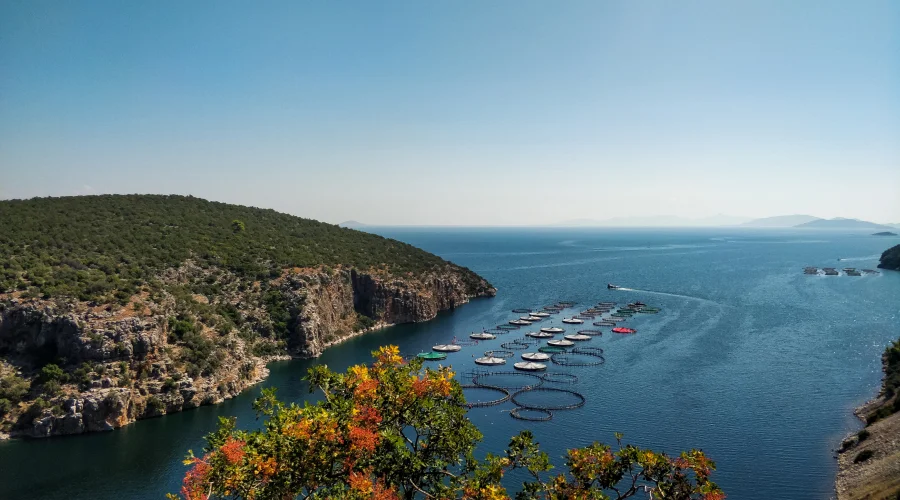
Hydra: Timeless Island Beauty
Although technically an island, Hydra is just a short ferry ride from Athens and is a favorite among day-trippers. This charming island is renowned for its lack of motorized vehicles, with donkeys and mules being the primary mode of transportation. Cobblestone streets, beautiful stone mansions, and a harbor lined with quaint restaurants create a serene, timeless atmosphere. Car-Free Paradise One of the most distinctive features of Hydra is its lack of motorized vehicles. The island’s narrow, cobblestone streets and alleys are best explored on foot, by bicycle, or on the back of a donkey. This car-free environment lends a unique sense of tranquility and authenticity, making visitors feel like they’ve stepped back in time. Architectural Elegance Hydra’s architecture is a marvel in itself. The island’s traditional stone mansions, painted in shades of ochre, white, and blue, are a testament to its historical wealth and maritime heritage. As you stroll through Hydra Town, you’ll encounter beautifully preserved neoclassical buildings, many of which once belonged to prosperous shipowners. Cultural Legacy Hydra has a rich cultural heritage that has attracted artists and intellectuals for centuries. It was home to the celebrated 19th-century Greek poet and Hydriot, George Seferis, and a retreat for musician Leonard Cohen. The island’s enchanting beauty and tranquil ambiance have inspired countless works of art, music, and literature. Vibrant Arts Scene Today, Hydra continues to foster a vibrant arts scene. The island is home to galleries showcasing the works of local and international artists. Numerous cultural events, music festivals, and art exhibitions are held throughout the year, providing a delightful blend of tradition and creativity. Breathtaking Landscapes Hydra’s natural beauty is simply breathtaking. The island is surrounded by crystal-clear waters, making it a haven for swimming, snorkeling, and sailing. The secluded coves, rocky cliffs, and hidden beaches offer plenty of opportunities to escape and explore. Historical Significance Beyond its aesthetic appeal, Hydra played a significant role in Greek history. The island’s residents were renowned seafarers and played a crucial role in the Greek War of Independence in the 19th century. Visitors can explore the Historical Archive Museum to gain insights into the island’s role in Greece’s fight for independence. Culinary Delights Hydra’s cuisine is a delicious reflection of its maritime culture. The island’s tavernas and seafood restaurants serve freshly caught fish, octopus, and other delectable seafood dishes. The local specialty, “hydriótika makarónia” (Hydra-style pasta), is a must-try. A Timeless Haven Hydra is not just an island; it’s a timeless haven. Its allure lies in its simplicity, its unspoiled landscapes, and its ability to transport visitors to a bygone era. As you explore the island’s car-free streets, bask in the Mediterranean sun, and immerse yourself in its artistic and cultural heritage, you’ll understand why Hydra has charmed generations of travelers. Hydra is a place where time seems to stand still, where modernity gives way to tradition, and where natural beauty intertwines with artistic inspiration. The island’s car-free tranquility, architectural elegance, and cultural richness make it a destination that lingers in the hearts of those who have had the privilege to experience its timeless allure. Hydra remains a gem of Greek island life, a testament to the enduring power of simplicity and beauty in an ever-changing world.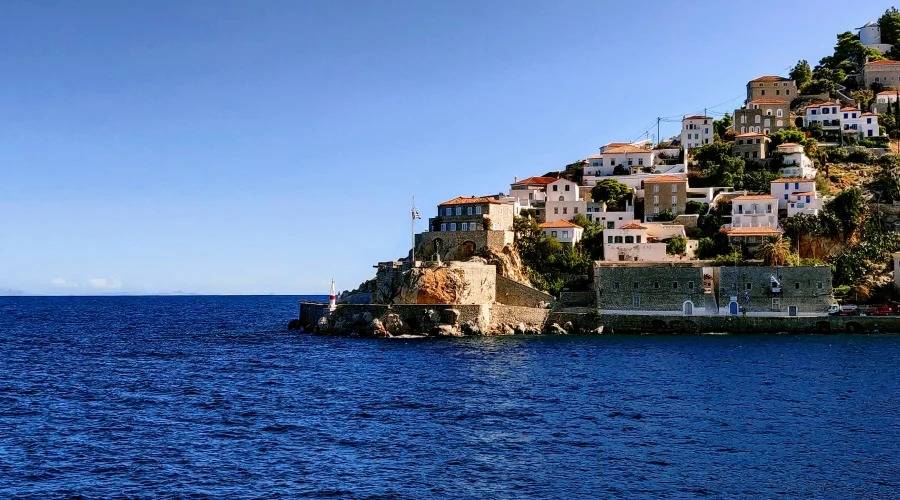
Meteora: Monastic Marvels
In the heart of mainland Greece, rising like natural skyscrapers from the Thessalian plain, stand the monasteries of Meteora. These awe-inspiring rock formations, crowned with ancient monastic complexes, are an exceptional blend of nature’s grandeur and human devotion. Meteora, a UNESCO World Heritage site, has captivated travelers for centuries and continues to be a place of wonder, spirituality, and marvel. Nature’s Sculpture Garden The name “Meteora” means “suspended in the air,” a fitting description for these enormous sandstone pillars that seem to defy gravity. Sculpted by wind and water over millions of years, the result is a breathtaking landscape with sheer cliffs that can reach heights of nearly 2,000 feet. The Meteora rocks are not only an astonishing geological formation but also a testament to the Earth’s geological history. Monastic Retreats In the 14th century, hermit monks sought refuge in the caves and crevices of the Meteora rocks, searching for isolation and spiritual enlightenment. Over time, the hermitages evolved into monastic communities, leading to the construction of monasteries. The monks relied on winches and ladders to transport building materials and themselves to these lofty perches, an astonishing feat of determination and faith. Spiritual and Cultural Significance Meteora’s monasteries became centers of Orthodox Christianity and learning. They preserved precious manuscripts and religious relics, and their inhabitants were spiritual guides for those who made the arduous pilgrimage to reach them. The monasteries also played a significant role in the resistance against the Ottoman Empire during the 16th century. The Monasteries Today, six monasteries of Meteora are open to the public: the Great Meteoron, Varlaam, Roussanou, St. Stephen, Holy Trinity, and St. Nicholas Anapafsas. Each monastery has its unique history and architectural charm. The Great Meteoron, perched on the highest rock, is the largest and most visited. Architectural Beauty The monasteries of Meteora are not just symbols of devotion but also masterpieces of Byzantine and post-Byzantine architecture. They are adorned with frescoes, icons, and intricate woodwork that illustrate the spiritual and artistic achievements of their time. The architecture seamlessly integrates with the natural surroundings, creating a unique aesthetic harmony. A Testament to Perseverance Meteora’s monasteries have withstood centuries of turbulent history, including the expansion of the Ottoman Empire and the upheavals of modern times. Many have been restored and now offer visitors a glimpse into their rich heritage. Visiting Meteora Today, Meteora is a popular destination for travelers from around the world. Visitors can explore the monasteries, witness the breathtaking views, and hike the surrounding trails. The experience of standing atop these rock formations, with the world stretching out below, is a moment of profound wonder. Meteora is a place where nature and spirituality converge to create a landscape that is at once awe-inspiring and deeply reverential. The monasteries perched on these soaring rocks are not only architectural wonders but also symbols of human perseverance and devotion. Meteora is a destination where the physical and spiritual worlds merge, inviting travelers to witness the marvel of nature and the resilience of faith, making it a truly unforgettable experience.
Conclusion
While Athens is a treasure trove of history and culture, the cities and towns nearby provide a fascinating contrast, offering diverse experiences that complement the allure of the capital. From ancient oracles in Delphi to Venetian fortresses in Nafplio, these destinations paint a broader picture of Greece’s multifaceted beauty. So, when visiting Athens, consider exploring these neighboring towns and cities for a more profound understanding of this enchanting Mediterranean nation.More information
The Acropolis ticket grants visitors access to the archaeological site of the Acropolis and its slopes, including the Parthenon, the Theater… see more
The Parthenon is an iconic symbol of ancient Greek civilization and a masterpiece of classi…
On Athens’ Acropolis, there is a stunning and well-known ancient Greek temple called…

